By Dan Weisz
Earlier last month I shared photos of a Vermilion Flycatcher Family. Those little birds have fledged, learned to fend for themselves, and are on their own now. In the meantime, the parents began a second brood, laying eggs in the nest and taking care of them. The eggs hatched and I returned to the nest to observe the family.
The father Vermilion Flycatcher was busy bringing food to the young. Here he is waiting near the nest for the right time to feed the young. Again, this appears to be a first year Male (born last summer) who has not gotten all of his red feathers yet. By next summer he should be glowing red.
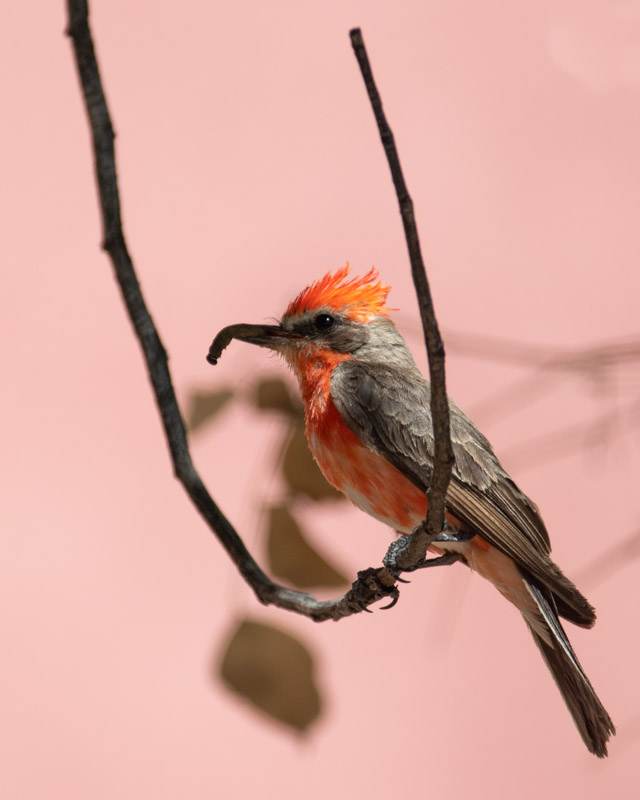
Usually the food deliveries to the nest are very quick and the parent flies off as soon as the snack is delivered. I like this shot because if you look closely at the head of the closest hatchling, you can see that its eye is very cloudy and not black like the eye of its sibling in the back. This is because the little bird has engaged its nictitating membrane, a translucent ’third eyelid’ while being fed. This eyelid serves as protection from any accidental poke the bird might receive in the mad rush to grab the food. The bird in the back is not getting food at this time, but it still is begging for something.
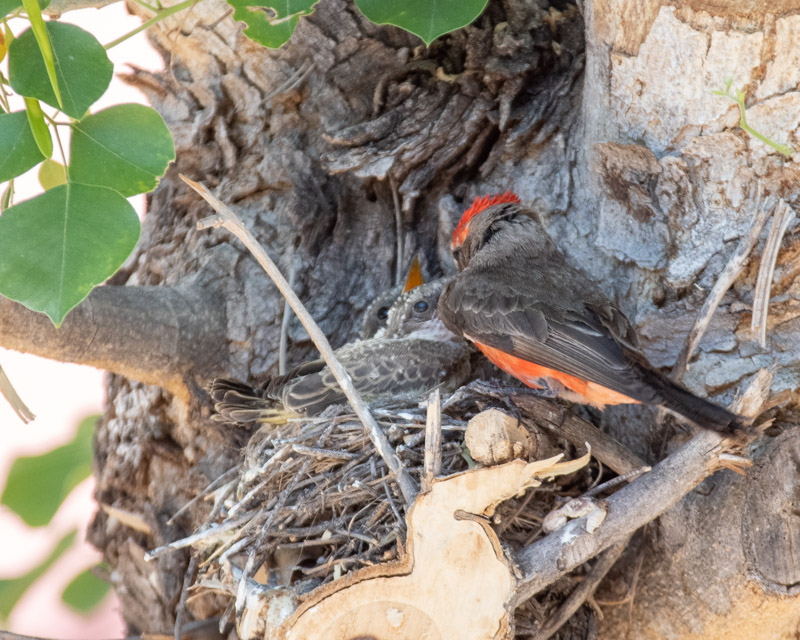
Mom also aided in food delivery to the little birds on the nest. Here she rests on a fence post between the nest and the community garden. She actually had her back to the nest but was looking towards the field. My hunch is that she was working double-time, feeding her newly fledged chicks as well as the birds still on the nest. She did not eat this caterpillar even though she held it in her mouth for a very long time and she eventually flew off towards the field.
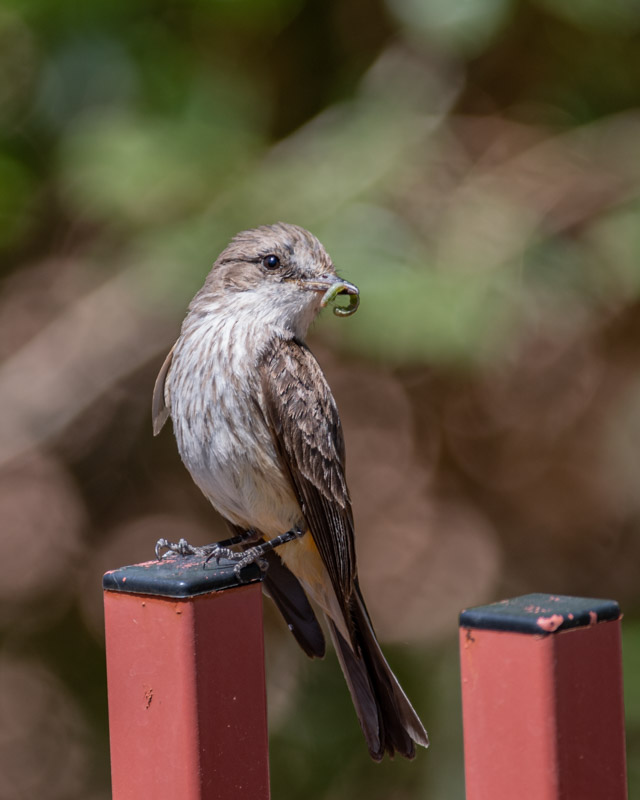
Later she was back with another caterpillar. This one ended up feeding a bird on the nest.
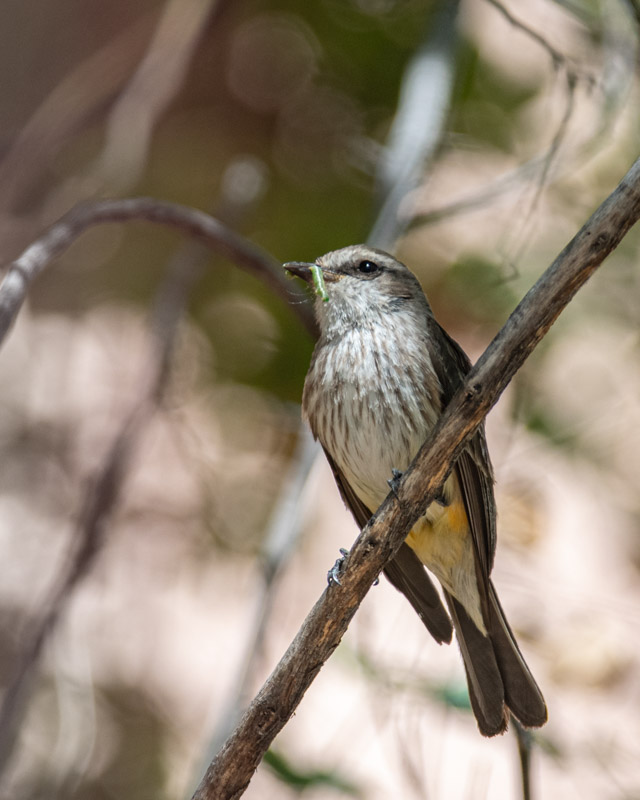
And Dad continued to supply food throughout the time I was there.
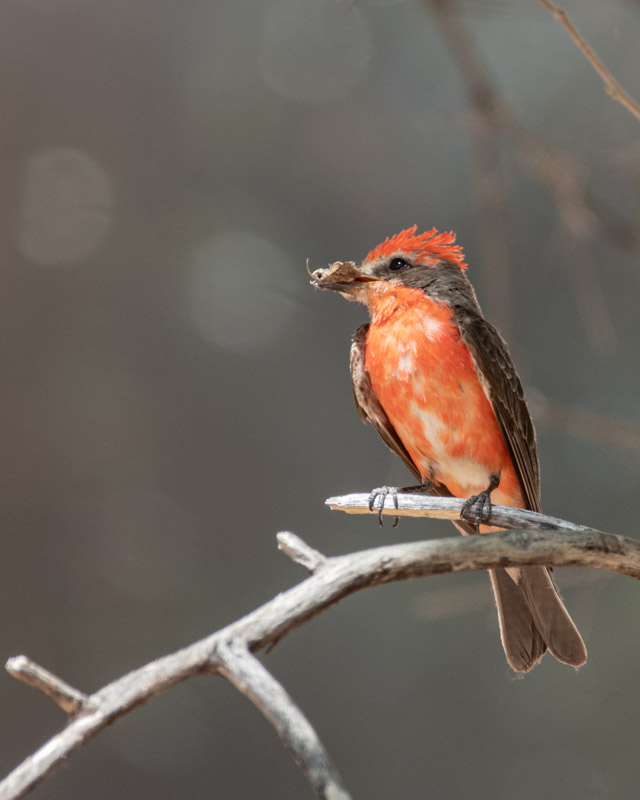
Incoming!!! Dad is just a blur as he flies towards three very hungry Vermilion Flycatcher chicks all with mouths wide agape. Baby birds’ mouths are often a bright orange color to give the parents an easy target to see when rushing to deliver food.
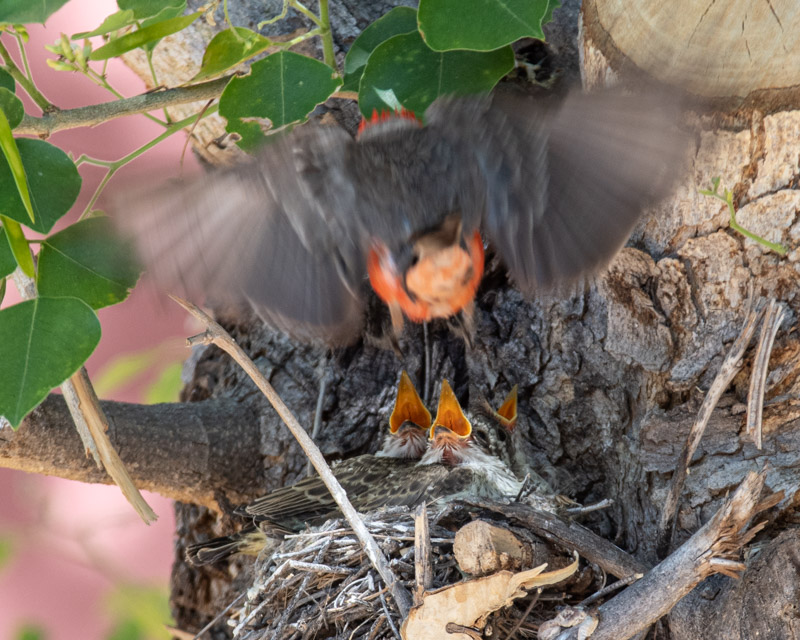
I returned to the nest five days later. The little birds had fledged, leaving the nest to fly around in nearby trees. Although the little birds were flying, they did no hunting. They spent their time waiting and calling for their parents to come and feed them, which both parents readily did. At this age, you cannot tell whether or not the baby is a male or female. Young males will be feathered just like the females at this time. Their red feathers do not begin coming in until later in the year.
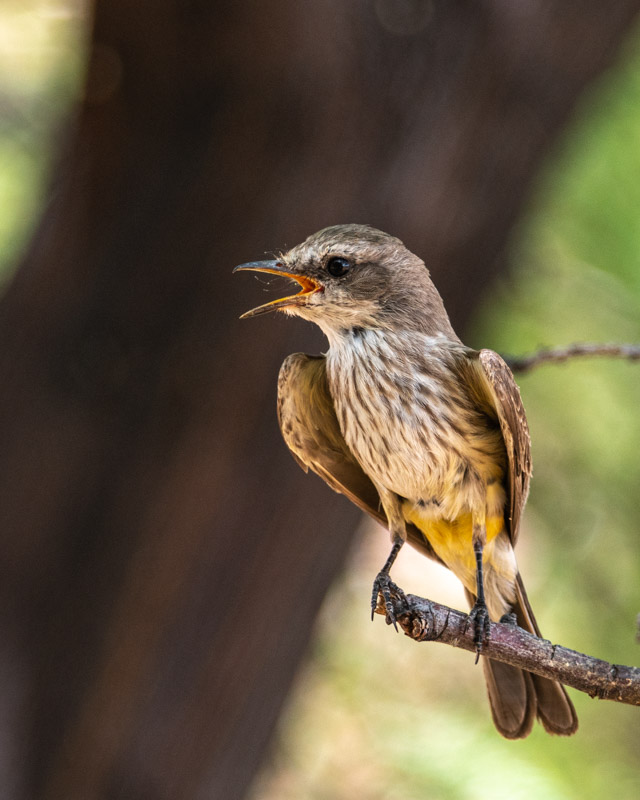
And here are birds #2 and #3! All of the young birds called for the parents constantly.
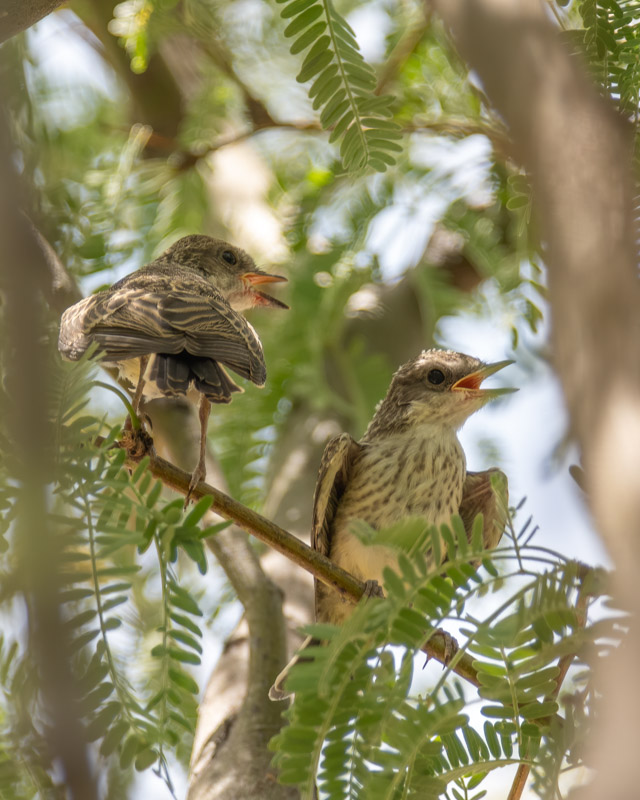
The other “Red Bird” family is a Cardinal family in my backyard. Here is a familiar looking sight, of an adult sized-“baby” bird or fledgling, begging for food from its father. Young cardinals have a black beak and brownish feathers. This photo was taken early one morning after sunrise.
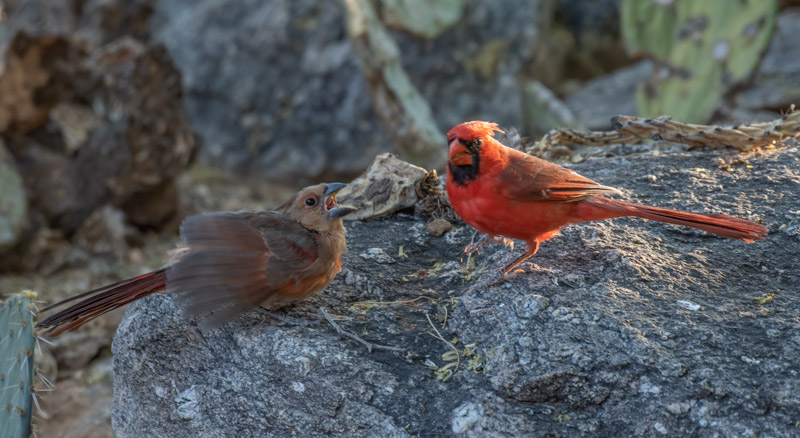
And shortly afterwards father Cardinal feed his youngster. First, it seems as if he shoves the food deep into the fledgling’s bill to ensure the food gets to the right place.
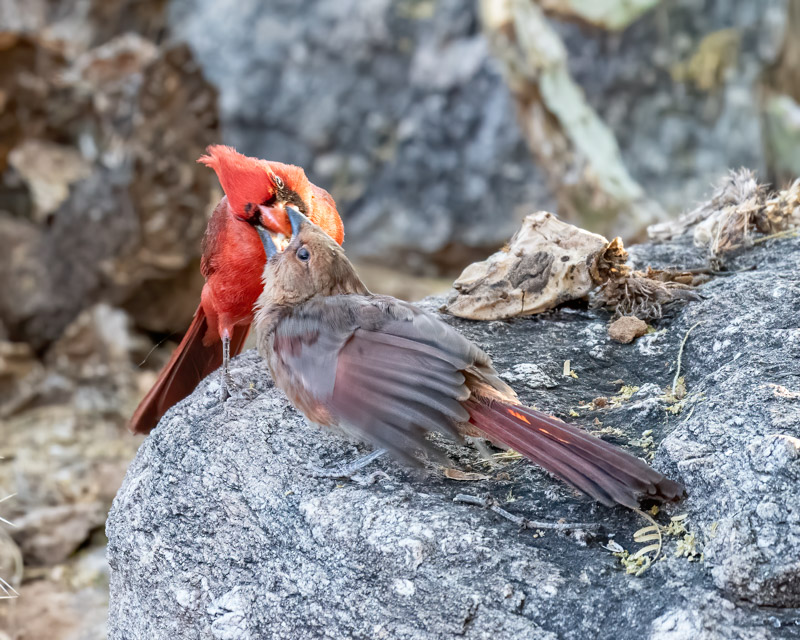
And then the feeding ends with something looking like a tender kiss.
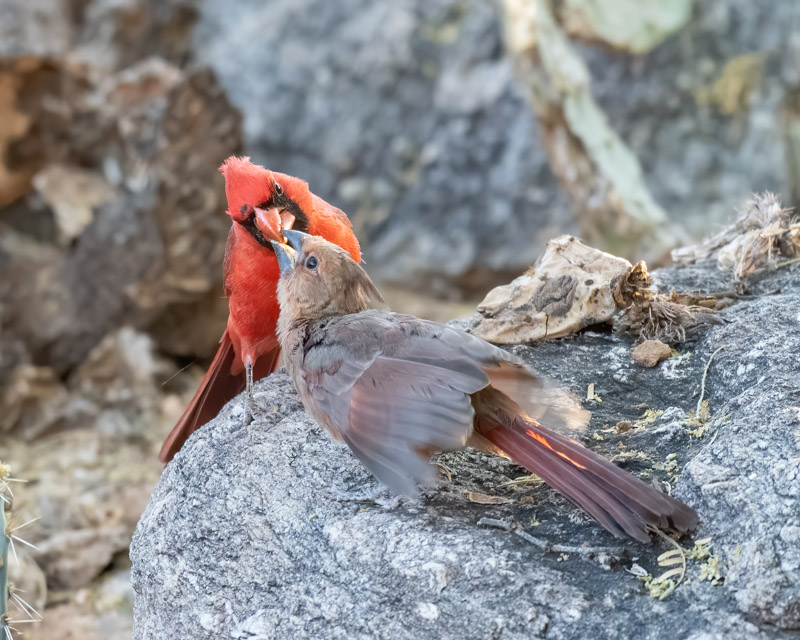
Two days later I noticed that the Cardinal was just about ready to lose a tail feather. Cardinals usually molt their feathers after the breeding season is over and when food is abundant. There goes his first feather!
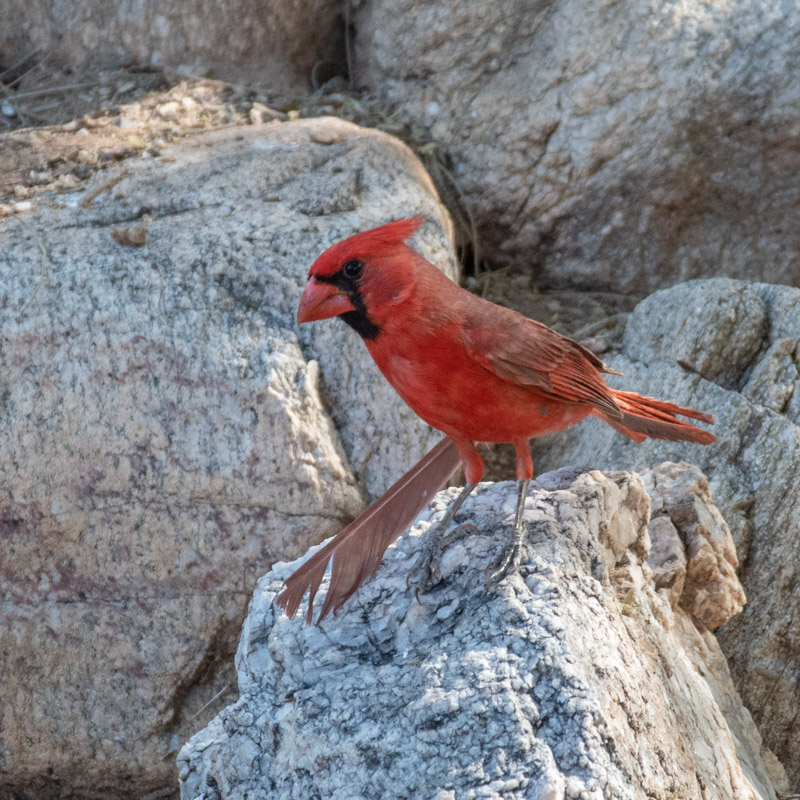
At the same time, I saw another young Cardinal. I am certain this is a different bird from the first one I saw. It has much more red feathering than the other does although it will not become completely red for a while. My guess is this is a young male cardinal while the first young bird we saw was a young female. Note that this bird also has a black bill.
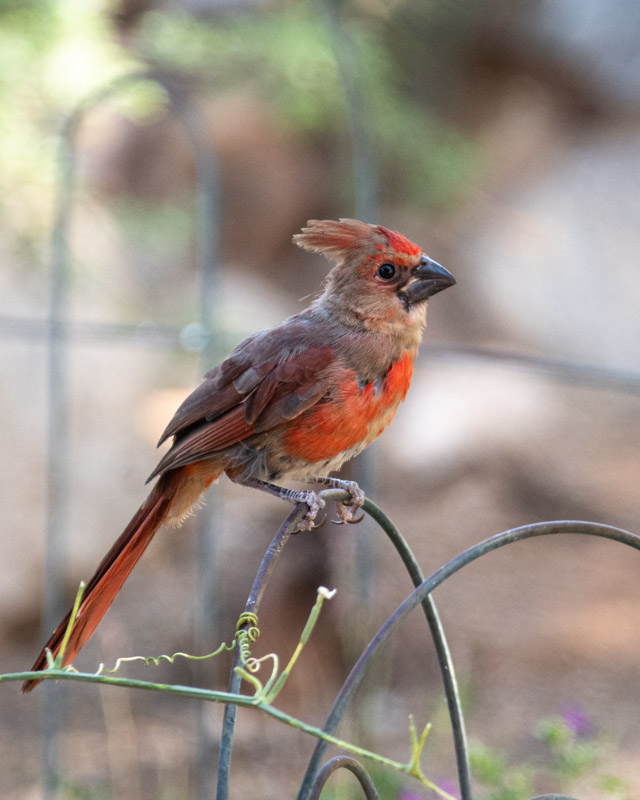
With my “regular” schedule disrupted by the new normal we all are facing, I have had much more time to look around, notice the wildlife, and take photos. I have additional emails ready to go featuring more of the burrowing owls, a look at Lesser Nighthawks, the story of one Saguaro, along with others…… So many choices!!
